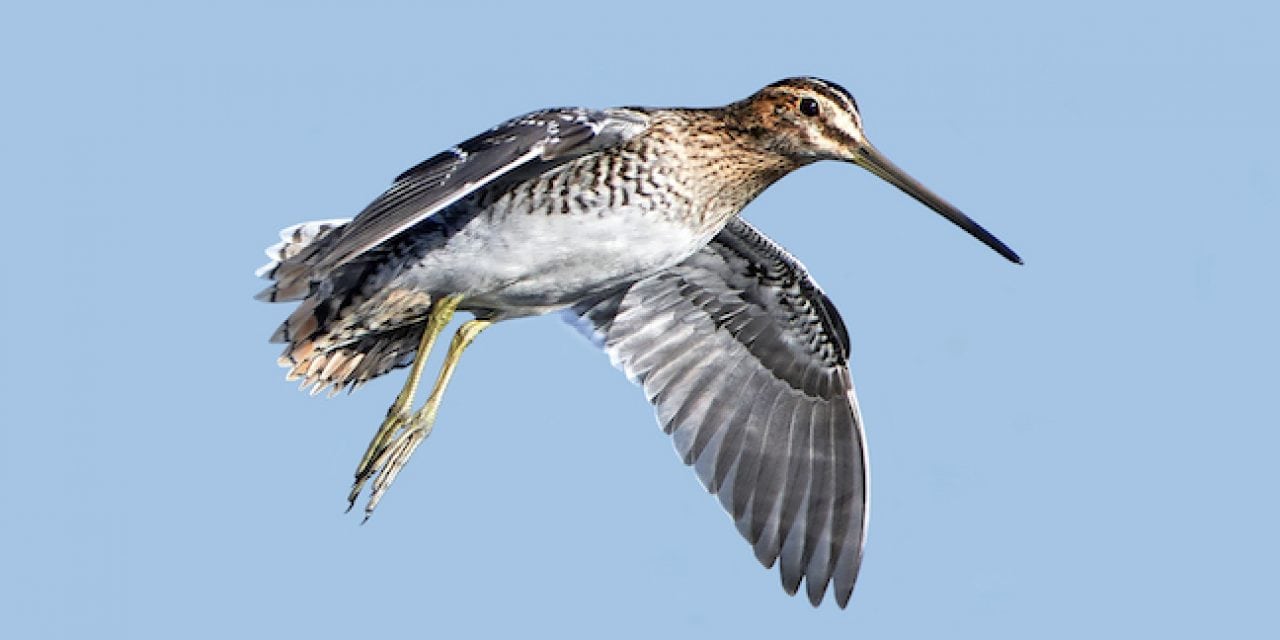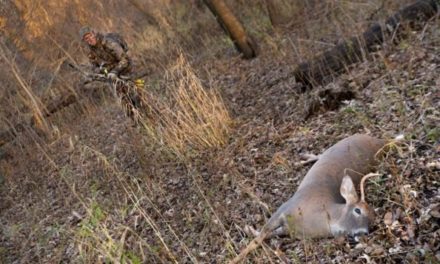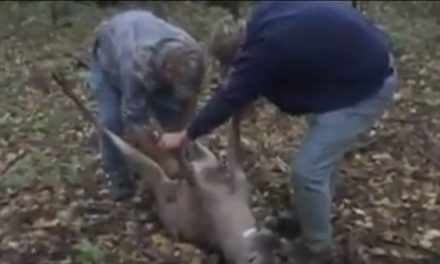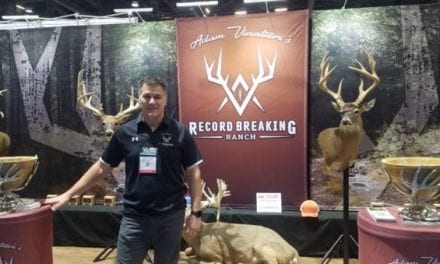Deer are not the only game in town for North Carolinians. Check out these options for small game and bird hunting.
Deer hunting is not the only hunting that is fun to do in the fall.
In fact, while deer hunting you’ll probably see many small game animals and birds while you are waiting for the deer themselves to show up.
Taking a day off of deer hunting to pursue them can give you a great experience in the woods.
In this article, we’ll discuss some of the better possibilities in North Carolina.
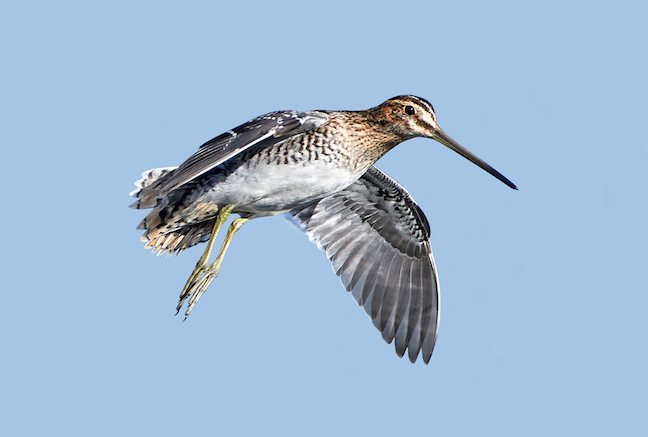
Shooting snipe is no joke. (Shutterstock image)
Snipe
Webless migratory game birds are wildfowl other than waterfowl with season structures regulated by the USFWS. These are snipe, woodcock, rails, gallinules and doves. By definition, they move long distances often, so hunters must capitalize on fleeting opportunities.
The epitome of here-today-gone-tomorrow hunting occurs with snipe. Although there are allusions as to whether they actually exist during “snipe hunts” played as jokes on camping trips, shooting snipe is no joke.
These fast birds have erratic flight, making them a challenge to down. Hunters should look for them in shallow, open water. I have flushed snipe in ditches, flooded agricultural fields after harvest, lake margins, power line rights-of-way and on Core Banks.
Finding snipe is so serendipitous that hunting them is usually by happenstance rather than intent. However, hunters who locate snipe haunts can look for the same conditions with good expectations to find them in the same vicinity again. The biggest reasons they move involve cold weather and water depth. Freezing weather drives them south, where they feed in water an inch or two deep.
Snipe hold well for pointing dogs. Hunters can also put them up without dogs. Their Achilles heel is that they return to the same spot from which they flushed. Hunters can watch them fly up, circle and come back. By sitting still, hunters have a bonus opportunity. A load of No. 8 shot works well, so keep a box in your vehicle along with some rubber knee boots.
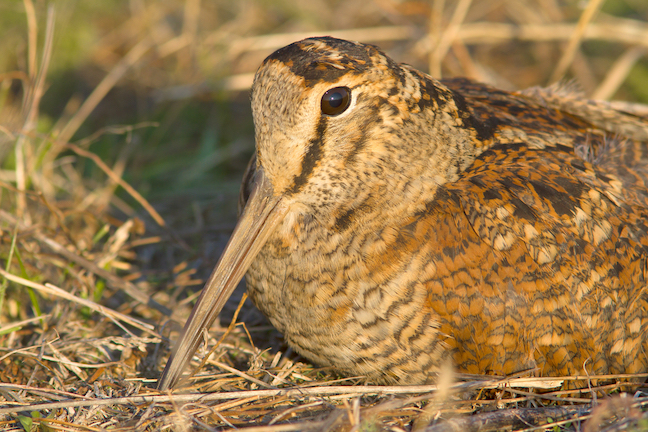
Woodcock are normally found in cover and hold extremely well for both dogs and men. (Shutterstock image)
Woodcock
Woodcock are the other webless migratory “shorebird” that remains legal game. While woodcock may flush from a field ditch, they are dwellers of hardwood swamps and nearby upland thickets.
Hard freezes in northern states drive major migrations southward to North Carolina, which has few dedicated woodcock hunters. Those who pursue them passionately generally use pointing dogs, with top choices Brittany spaniels and English setters. Flushers also work well, as the name “cocker spaniel” indicates.
I use my Lab, Tinker, to find and flush woodcock. Some of these hunts have been impressive, with limits of three bagged on multiple flushes. Our best hunts usually occur in January. However, whenever freezing rain arrives, the woodcock migration peaks. Frozen ground concentrates them in small oases around open water. Hunters should look for white dollops they excrete while they are feeding on earthworms.
Woodcock are normally found in cover and hold extremely well for both dogs and men. Also, they are not large or particularly tough birds. Your first shot at one is likely to be close and fast; your second — if you get one — is likely to be at range. Fast-handling, open choked shotguns loaded with No. 7 1/2 or No. 8 shot are best for woodcock. I use a Stevens.410 double with choke tubes — skeet in the right barrel and full in the left.
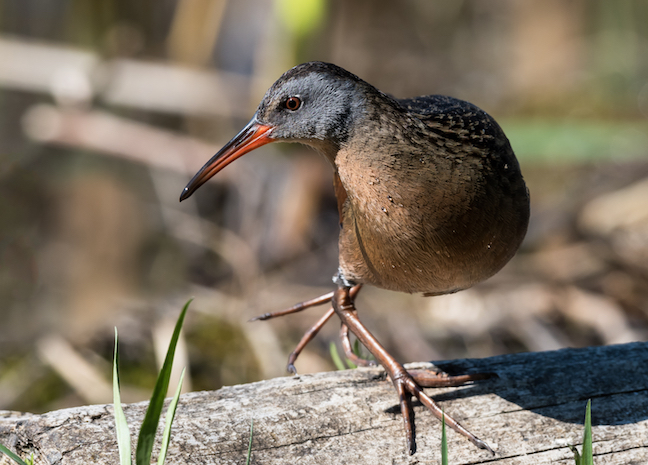
The four rails that are game birds are king, clapper, Virginia (above) and sora. (Shutterstock image)
Rails and Gallinules
Three seasons ago, changes to the state’s season format to a split season extended the rail season into November. The four rails that are game birds are king, clapper, Virginia and sora. Kings and clappers weigh about a pound, while Virginia and sora rails are songbird-sized.
While most rail hunting occurs in coastal tidal marshes, hunters can find Virginia and king rails in meadows and fields with ankle-deep water. The key to finding them is learning to recognize their staccato calls.
In tidal marshes, hunters pole their boats through the grass on lunar high tides. These super tides concentrate the birds on floating grass mats where hunters easily flush them. In freshwater marshes, hunting is more difficult. Hunters slog or wade to flush the birds. However, they are also good targets for pointing and flushing dogs.
Rail hunters usually use No. 7 1/2 or 8 lead shot loaded in open-choked shotguns. Hunters can use lead shot in salt marshes unless they are hunting on public wildlife management areas where non-toxic shot is required.
The season for gallinules and moorhens runs concurrent with rail season. Moorhens, also known as common gallinules, are the most widely distributed water-oriented game bird worldwide. They are not very common in North Carolina but hunters may encounter them during rail hunts. Purple gallinules are beautiful, with iridescent blue, green and purple feathers. On the short list of game and nongame species I have never taken, if I ever get the chance, I will take a purple gallinule to the taxidermist. Both species occur primarily along the coast, where hunters are most likely to encounter them in brackish or freshwater environments. Although purple gallinules are at their normal northern range limit along the South Carolina line, hunters have taken them as far north as Pamlico Sound.
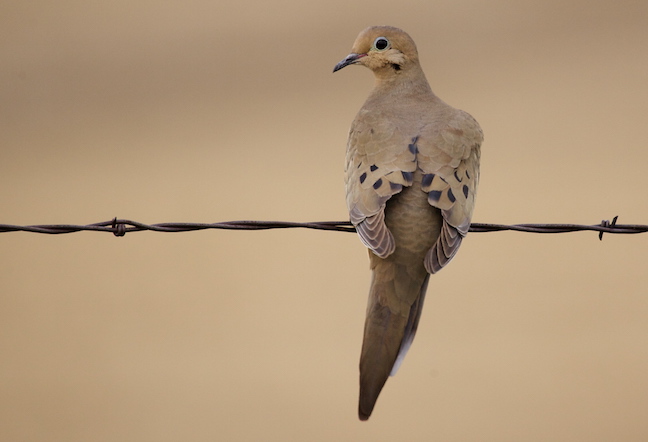
Mowed power line and pipeline rights-of-way also attract doves. (Shutterstock image)
Mourning Doves
Late-season dove hunting is not as consistent as the early season hunting is in September. Agricultural practices that plow fields under after harvest have made it more difficult to find the birds than back in the day when cornfield stubble and waste grain remained on top of the ground until spring.
Nevertheless, dove hunters should be on the lookout for any corn stubble, with no-till plantings possible options. Other possibilities include agricultural soybean fields or sorghum fields planted as food plots.
I have experienced barrel-burning hunts with snow on the ground in standing sorghum when it was the only food source available. At many North Carolina game lands, sorghum plots are common wildlife plantings.
The Commission often plants low-cost seed that is beyond its specified germination dates in these fields, because that seed typically still sprouts and because it is made available through the National Wild Turkey Federation. Much of the seed is sorghum.
Other places to look for doves are pastures, clear-cuts and fields over-seeded with winter cover crops such as rye. The seed must be covered or drilled as a standard agricultural practice for the field to legal for hunting.
Some of my best late-season dove shoots have occurred in borrow areas where sand has been mined. This creates ideal growing conditions for early dove sources like pokeberries.
Mowed power line and pipeline rights-of-way also attract doves. Clear-cuts are great places for flushing doves because the sprouting grasses and stumps hide your approach. For shooting late-season doves, hunters should use heavy doses of No. 7 1/2 or No. 6 shot in a 12-gauge shotgun with a full choke barrel. They are adult birds and are hardier than the young birds of September.
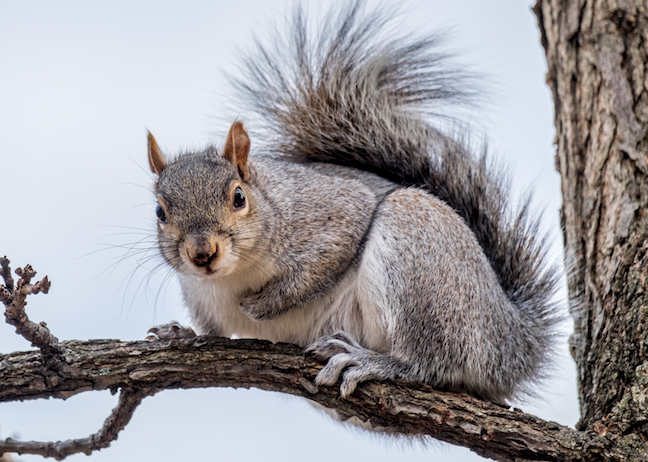
Of the three game species of squirrels, the most abundant are the gray squirrels most hunters seek. (Shutterstock image)
Squirrels
Of the three game species of squirrels, the most abundant are the gray squirrels most hunters seek. However, the larger fox squirrel and smaller red squirrel provide color variety in a world dominated by gray.
Gray squirrels occur everywhere where there are hardwood forests. When the season opens in October, hunters easily take them with shotguns or rimfire rifles. They hunt them by stalking and by sitting still in an area with plentiful sign, including gnawed acorns and hickory nuts, leaf nests and tree cavities with gnawed openings. Some of my favorite game lands for hunting gray squirrels are Uwharrie, Hyco and Pisgah.
Another fun way to hunt squirrels is with a cur or feist. These dogs are bred for treeing squirrels, trailing them to the tree and barking to indicate where the squirrel is hiding.
I hunt squirrels with Bruce Trujillo, who owns Poncho, a Parnell’s Carolina cur. Poncho accounts for about 100 squirrels during a season, including a handful of fox squirrels.
Fox squirrels are legal game in 31 counties, with the list having expanded over the years as these large squirrels reclaimed their former range. The coastal plain counties have the highest populations with the most color variations. The standard northern phase with a gray body and russet tail, head and feet occurs in the mountains, where it arrived from Virginia over the past decade.
Most game lands in the 31 counties hold fox squirrels because the Commission puts emphasis on longleaf pine restoration and uses controlled burns to remove hardwood competition in the understory. On the coast, fox squirrels inhabit mature longleaf pine forests and old-growth hardwood forests. In the mountains, they inhabit mature hardwoods.
Red squirrels, or “boomers,” live at the highest elevations, especially in Nantahala and Pisgah national forests. Hunters usually hear their trilling calls before they see them. They are highly animated, running between ground holes, rocky outcrops and tall trees. Since they are half the size of a gray squirrel, many hunters do not bag them, even if the opportunity arises.
However, making a trip for boomers takes the hunter on a tour of some unique habitat. They prefer evergreen timber that mountain folk refer to as “dark” timber.
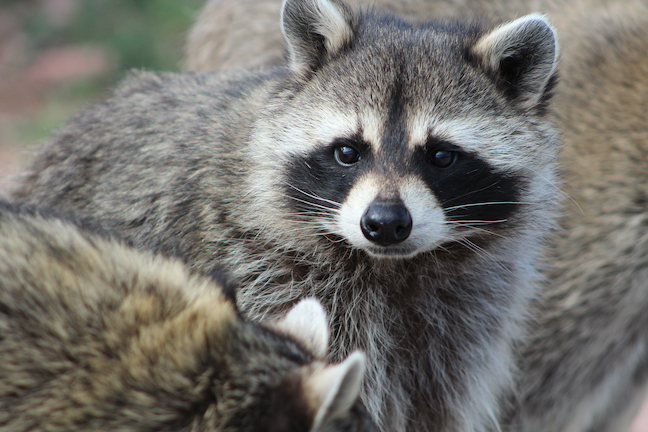
While a coon hunt can be long, most are short when compared to a rabbit or deer hunt. (Shutterstock image)
Raccoons and Opossums
I know of no hunter who wants to admit that his pride-and-joy coon dog has ever treed an opossum. Nevertheless, I have seen it occur often enough that dogs’ owners have demanded I delete opossum images from my camera.
Opossums were once desirable game for night hunting expeditions with treeing dogs. Their fur was and still is worth a dollar or two. Nowadays, even a raccoon hide is not worth much more. Those who eat these tree-dwellers often prefer marsupial soup to coon stew.
The vast majority of night hunters only want their dogs to tree raccoons. The sport has a lot going for it because hunters can enjoy family time by taking their children hunting after they have eaten supper and completed homework.
When I was a teenager, we hunted raccoons with a pack of hounds, with Walkers, black-and-tans, blue-ticks and redbones dominant breeds. Now, most hunters run their hounds singly, unless they are running young dogs paired with experienced dogs during training. This allows each hunter to work with his dog, with a group of hunters releasing one dog at a time.
While a coon hunt can be long, most are short when compared to a rabbit or deer hunt. The dog strikes a cold trail, follows the scent and runs the raccoon up a tree. Often as not, the raccoon hides in a hollow where the hunters cannot spot it, even with powerful lights.
Many hunters do not take raccoons, but those who shoot them typically use a .22 rimfire rifle. Many deer hunters complain about raccoons eating corn they have set out to attract deer. Therefore, deer feeders are excellent places to hunt raccoons with permission to hunt near them easy to get after deer season ends.
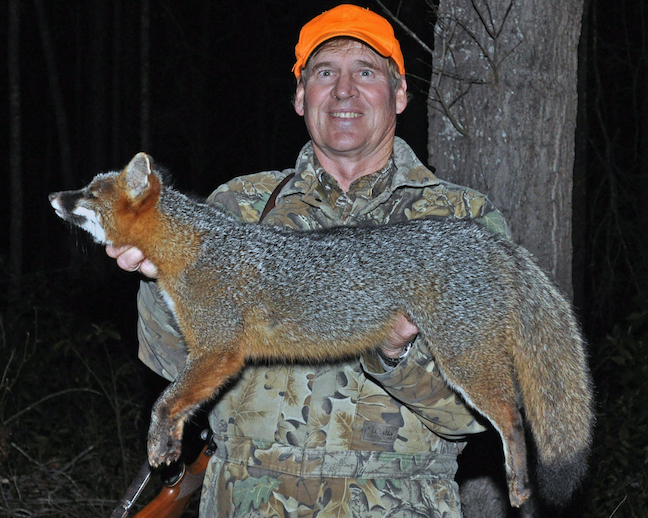
Author Mike Marsh took this gray fox in Pender County.
The canids — red and gray foxes and coyotes — are fascinating predators and furbearers. However, the hunting regulations can be confusing. While coyotes are legal to hunt day and night year-round in most counties, in five northeastern counties they cannot be hunted at night to prevent accidentally mistaking them for protected red wolves.
Fox hunting is even more confusing. To find out which counties have open seasons for hunting them with firearms, hunters must visit the N.C. Wildlife Resource Commission website.
While the season for bobcats is conveniently consistent, hunters who use electronic calls for hunting coyotes, which is legal, cannot take bobcats or foxes that may also come to electronic calls. Sale of bobcat hides is legal, but hunters must have tags to sell them.
Another interesting aspect of hunting these predators runs obliquely to opportunity. The legislature has required the Commission repeatedly over decades to study the impact of enacting uniform fox regulations, with foxes the only game species still regulated by statute law. North Carolina hunters and trappers take 40,000 coyotes yearly.
However, this annual kill rate is not lowering their population. Jon Shaw, the Commission’s deer biologist, said the coyote population would have to sustain a 60 percent annual loss to have a noticeable impact. Yet, in counties where taking foxes by trapping and hunting is illegal, the coyote take is near zero. Without foxes as a bonus incentive, hunters and trappers do not pursue coyotes.
To make sure you can take whichever predator comes to your calling, use a mouth call and hunt in a county where taking foxes with firearms is legal. Furs were not worth much last season, but they may go up in price. Most hunters are not after the hides, but enjoy the challenge and excitement of predator calling.
The post Prime Small Game & Bird Hunting Options appeared first on Game & Fish.

